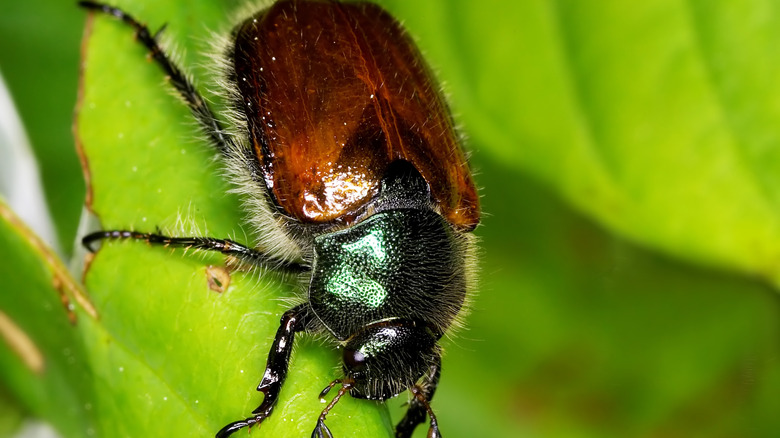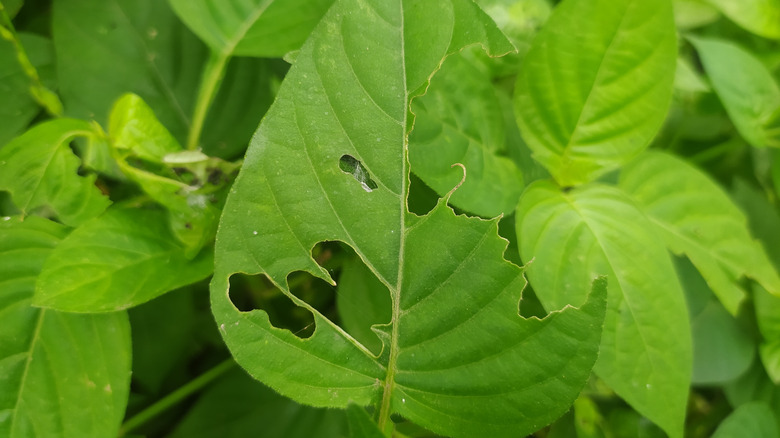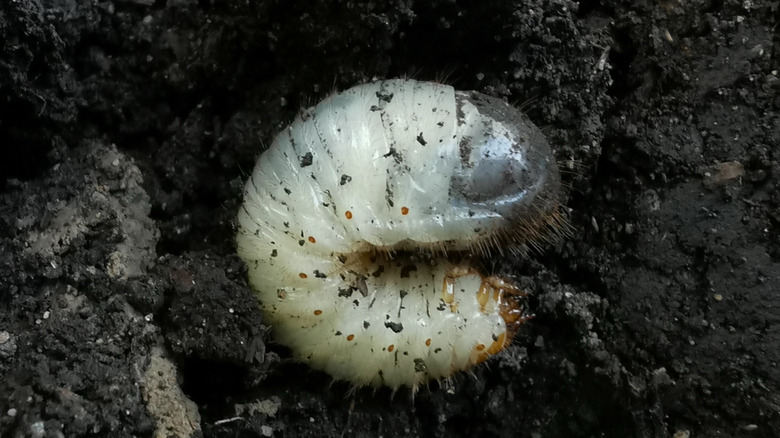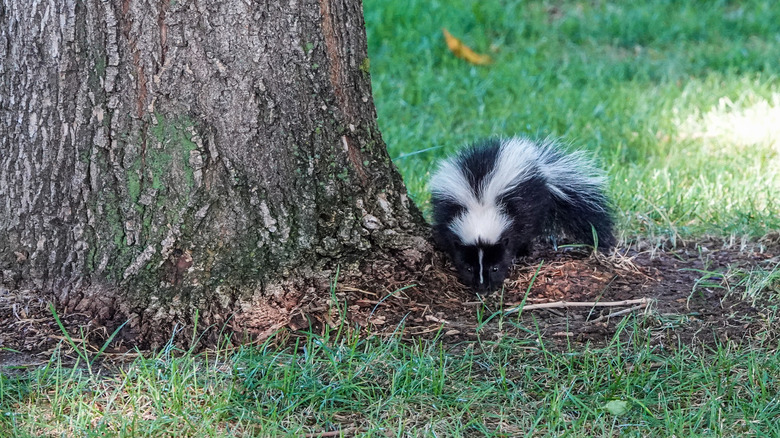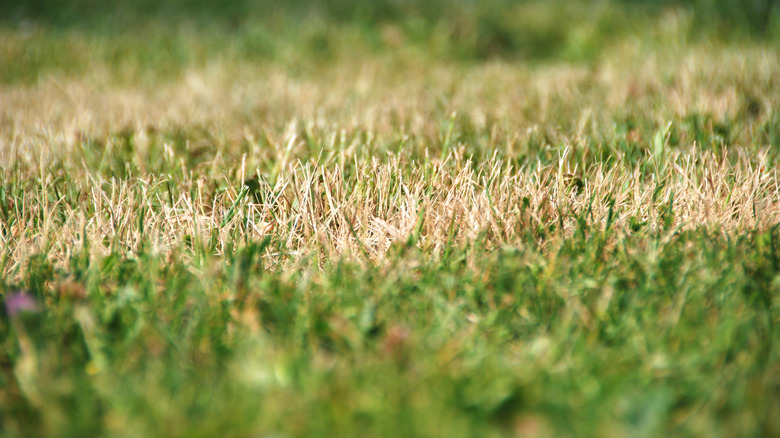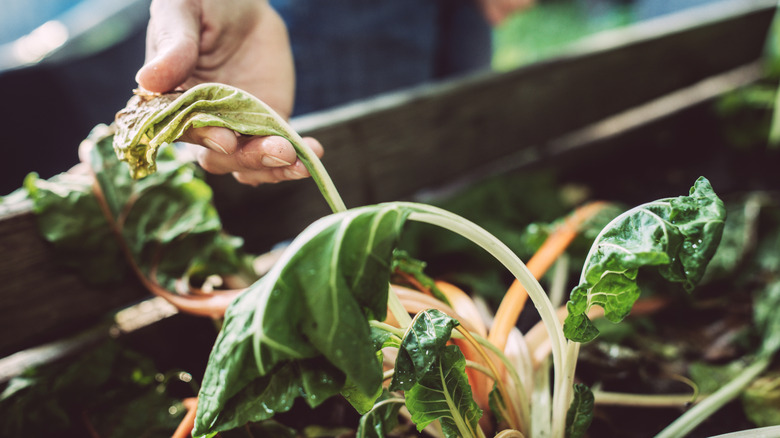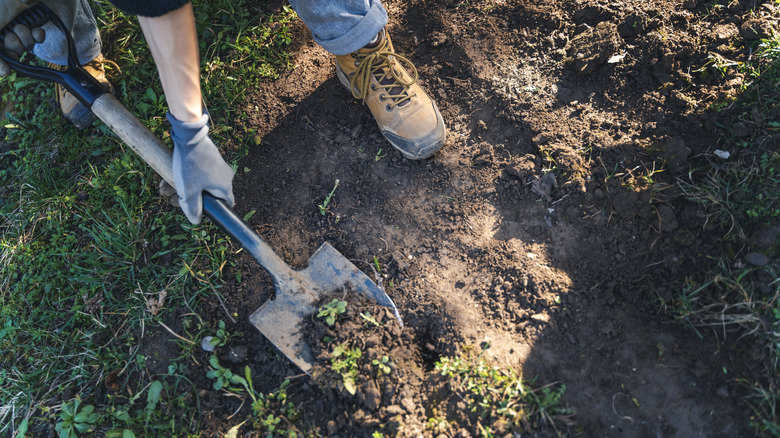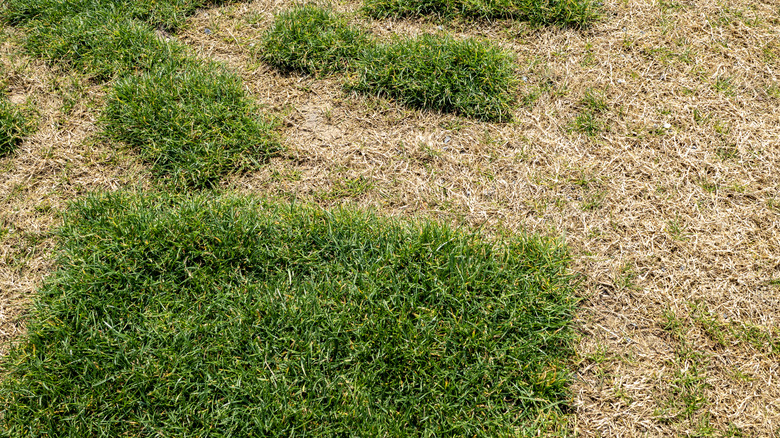7 Signs June Bugs Are Destroying Your Plants
The small holes and other damage in your plants may be the work of June bugs. Also known as May beetles or June beetles, these insects can be devastating in your yard, leaving behind multiple signs of their presence. Changes in your plants' appearance, turf disturbances, and an uptick in pest visits may indicate you have an infestation on your hands. June bug may be an affectionate Southern nickname, but nothing is cute about the damage they often wreak.
June bugs have a "season" marked by late spring to early summer, when they emerge to mate. Their name just doesn't apply to one specific beetle, but rather a whole family of them — over 200 in North America. When they're larvae, June bugs are at their most dangerous, as the white grubs feed on plant roots, reducing access to water and vital nutrients. The pests have three larval stages known as instars, remaining in the ground to feed until at the end of their third stage where they emerge as adults. While the larval June bugs are the worst, even the adults can be bothersome in a yard, as they chew on leaves and buzz around your outdoor lights. By keeping a keen eye on your plants, you can then take steps to get rid of June bugs.
There are holes in plant leaves
One of the most noticeable signs of June bugs destroying your plants is leaf holes left behind on shrubs, trees, and plants. The tiny holes are often irregularly-shaped and don't damage the plant, but are still unsightly. Yet the presence of holes is concerning. While the adults feed on the ground, their larvae may be in the soil and are ready to cause significant damage. Seeing those small imperfections isn't only cosmetic, it's a warning sign of possible future destruction.
You see larvae in the ground
The June bug life cycle largely consists of three parts, beginning when the females lay eggs in the soil. Seeing visible larvae in the ground is a major sign June bugs are destroying your plants. Featuring a white body and shaped like the letter C, June beetle grubs live just below the surface, feeding on your plants' roots. They'll continue growing, creating more destruction as they age into adults.
You have increased visits from critters
The presence of white grubs brings another sign to your yard. Wildlife like raccoons, skunks, and birds may dig in the ground in hopes they retrieve a tasty grub or two. Not only can this leave unsightly holes in the dirt, but it also means that June bug larvae are likely in the yard, possibly feeding on your plants from beneath the soil. This also could be a reason why moles are suddenly attracted to your yard, as moles are big fans of the grubs.
Brown patches appear in your lawn
If you venture outside and notice unwanted thin or brown spots across your lawn, it may be a sign of a June bug infestation. These changes in the yard's appearance often means that the larvae are feeding on the grass' roots. Some homeowners may think it's drought, but when it doesn't respond to watering, inspect the ground for grubs. In some cases with severe damage, you may be able to easily pull up the turf due to the damaged root system.
Plants have wilting and yellowing leaves
As June beetle larvae feed on plant roots deep in the ground, it often results in the appearance of wilting and yellowing leaves on the surface. These symptoms might initially resemble drought stress, but June bugs could really be to blame. The damaged roots mean the plants weaken as they struggle with retaining nutrients and moisture. Some plants, particularly small ones, might even die.
You notice you have damaged plant roots
When digging in the soil near your plants to check on the roots, you may observe damaged root systems attached to your plantings. The larvae frequently chew through plant roots while nestled in the ground, often doing so undetected until you're tilling the soil. They're fond of grasses, ornamental shrubs, young trees, and vegetables, munching on them until fall where they disappear deep into the soil until they can emerge after winter.
The yard features loose sod
Sometimes a June bug infestation can be so severe that the damage to the grass roots will actually loosen the sod. It may be possible for you to easily turn over whole sections of your yard. If the beetles have done this to your yard, it's very likely the larvae are eating your plants as well.
